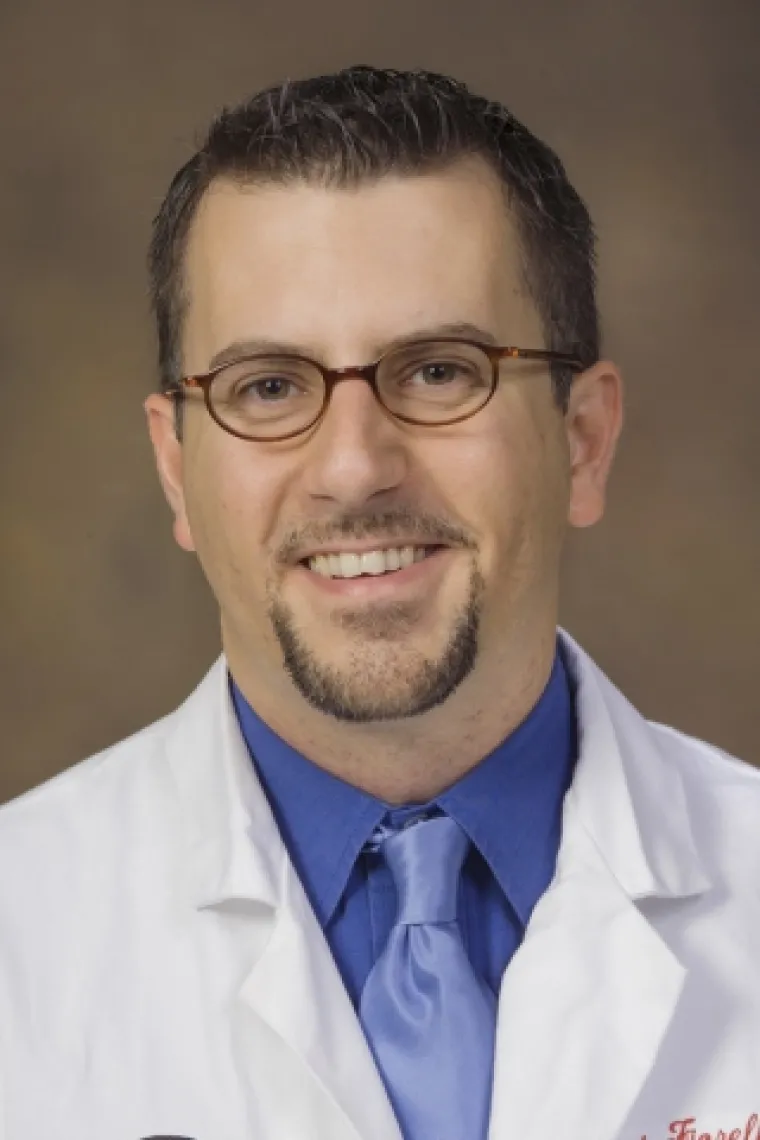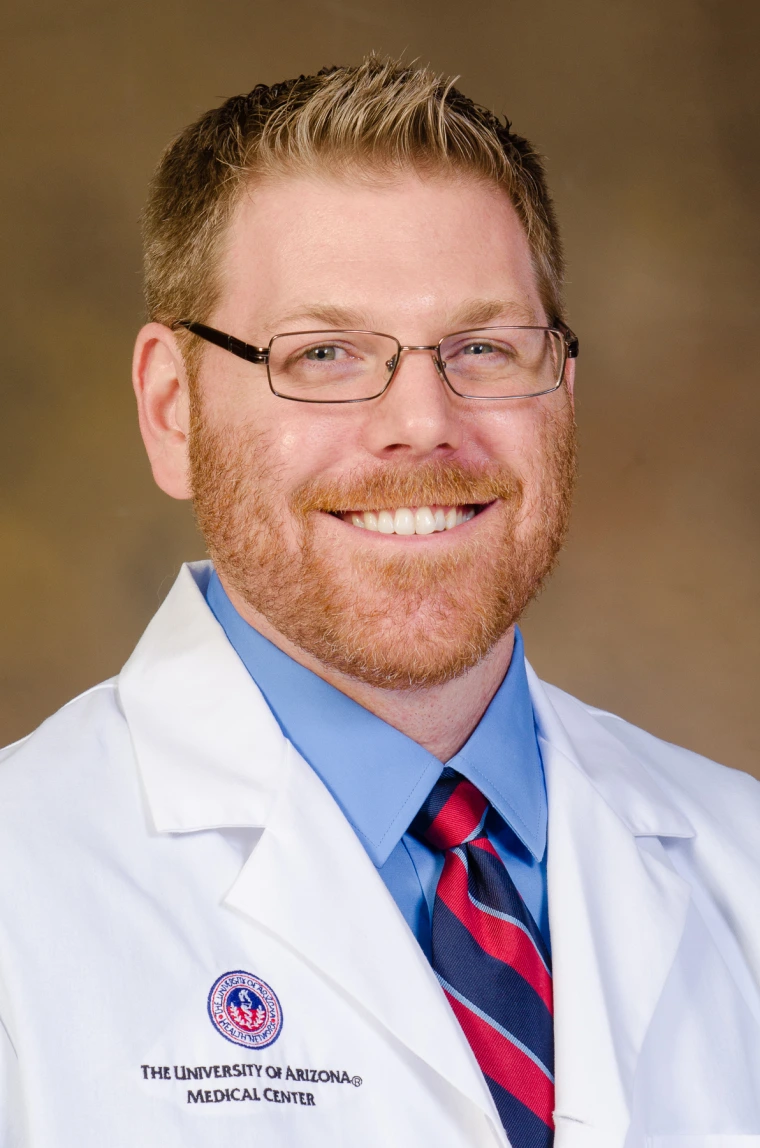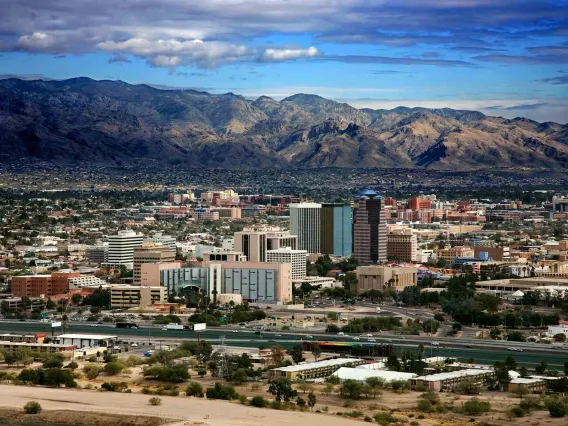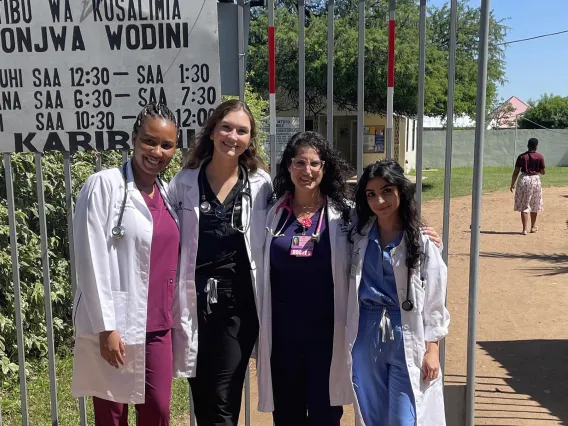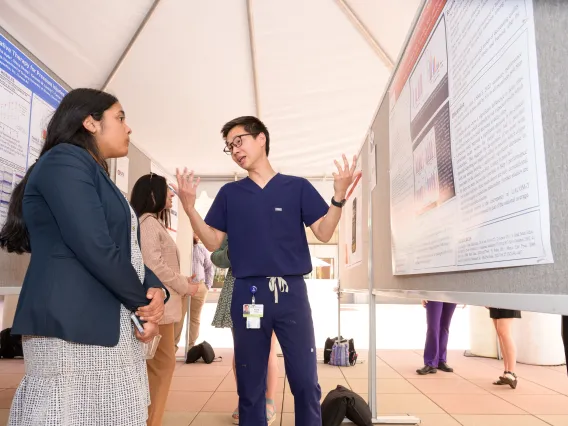Emergency Medicine
Mission Statement
To create a supportive learning environment that promotes independent thinking and produces true specialists in emergency medicine, able to care for any patient who walks through the door with skill and compassion, while continuing to grow the specialty. The Department of Emergency Medicine is committed to creating and sustaining a culture emphasizing social and cultural understanding and competency throughout our educational, research and clinical missions.
The University of Arizona College of Medicine – Tucson offers a comprehensive three-year emergency medicine residency that combines high-volume clinical exposure with strong academic and research opportunities. Residents train at two key sites: the University Campus, a Level 1 trauma center treating over 95,000 patients annually, and the South Campus hospital, serving more than 51,000 patients each year. The program offers a unique Southwest experience, focusing on the care of diverse populations, including Hispanic, Native American and underserved communities. Residents receive hands-on training in critical care, emergency ultrasound, pediatric emergency medicine and other subspecialties, such as toxicology and sports medicine, with opportunities for EMS and air ambulance ride-alongs.
The curriculum includes specialized rotations in emergency surgery, trauma and critical care, led by nationally recognized faculty committed to education and innovation. The program emphasizes academic growth, with active research in areas such as prehospital care, cardiac arrest and trauma resuscitation. Residents are encouraged to participate in clinical trials and scholarly work, preparing them for leadership roles in emergency medicine. Graduates of the program have a strong track record of joining top-tier emergency medicine practices nationwide, reflecting the program’s rigorous training and academic excellence.
Faculty
Staff
About Our Program
The University of Arizona College of Medicine – Tucson Emergency Medicine Residency Program is a categorical program established in 1982. We use two separate and unique emergency departments within metropolitan Tucson to expose residents to the broadest variety of patients and department formats. The combined annual volume cared for by the residents in our three training programs exceeds 145,000 patients. Our program boasts outstanding faculty, an internationally renowned medical center where emergency medicine receives an abundance of intra-institutional respect, and progressive and exciting didactic curricula.
This year, the University Campus program is accepting applications for 14 PGY1 positions in the NRMP Match. We will also be accepting applications for two U.S. Air Force Operation Emergency Medicine PGY1 positions through the Military Match.
We aim to:
- Provide a multi-modal educational environment to deliver content covering the entirety of the Model of the Clinical Practice of Emergency Medicine
- Provide exposure and education related to many of the subspecialty areas of emergency medicine, delivered in part by subspecialty trained emergency physicians
- Foster an environment embracing the unique qualities within our patient population and colleagues
- Foster an environment promoting the well-being of those who work within it
- Foster and encourage the pursuit of new knowledge through scholarly activity and an environment of inquiry
Our clinical and didactic curriculum is highly focused and intense, with an emphasis on:
- Excellence in bedside teaching
- Progressive teaching modalities
- Graded responsibility
- A proactive evaluation system
Our training is consistent, efficient and loaded with enthusiasm. Our graduates are well-equipped to enter emergency medicine in leadership roles.
Banner – University Medical Center Tucson
Banner – University Medical Center Tucson (BUMCT) is a primary provider of indigent care through the Arizona Health Care Cost Containment System, a regional Level 1 trauma center, and a tertiary care referral hospital that creates an extremely interesting milieu of patient pathology. The BUMCT Emergency Department is our primary teaching setting in which more than 80,000 patients of a diverse socioeconomic mix are cared for annually. The acuity is high and the turnover rapid. Approximately 70% of a resident’s ED time will be at BUMCT in a longitudinal fashion.
Banner – University Medical Center South
Banner – University Medical Center South (BUMCS) has become an important contributor to our teaching program. Our integrated faculty supervise our residents in this unique community setting that serves about 45,000 patients annually. Approximately 30% of a resident’s ED time will be at BUMCS ED in a longitudinal fashion.
Southern Arizona Veterans Affairs Health Care System
The Southern Arizona Veterans Affairs Health Care System (SAVAHCS) in Tucson has an outstanding national reputation for both research and clinical practice. This sprawling Spanish colonial complex serves as the site for our PGY1 medical intensive care rotation and an additional emergency medicine rotation experience. A superb combination of teaching excellence and patient care responsibility is afforded to the resident at SAVAHCS.
Tucson Medical Center
The Tucson Medical Center (TMC) Emergency Department is privately staffed with an outstanding group of board-certified emergency physicians, many of whom are our own alumni. TMC ED is very busy, seeing in excess of 85,000 patients per year. Residents work one-on-one under the direct supervision of attending staff during their senior year.
On top of the salary and benefits that all College of Medicine – Tucson residents receive, University Campus residents receive additional benefits:
- Meal stipend
- Professional liability insurance
- Free parking
- Mental health services
- Scrubs allowance
- Stipend to attend one major conference during senior year
- A residents’ cubicle with two personal computers
- Merit badges: ACLS, ATLS, PALS and instructor courses
- ACEP, EMRA and AAEM membership
- Access to Rosh Review, EM Coach and PEERprep
Curriculum
| Pediatric EM experience is longitudinal throughout training time. |
Our outstanding didactic conferences integrate a number of continuous conference series. The material is extensive, yet practical — just like emergency medicine! Our stimulating and interactive didactics are brought to you by our nationally recognized faculty, institutional guest speakers and visiting guest keynote speakers in emergency medicine.
We have an average of five hours of EM conferences weekly, with several full conferences each year dedicated to hands-on practice in the Arizona Simulation Technology and Education Center (ASTEC). Three conferences each year are held jointly with the South Campus Residency Program.
Our continuous conference series includes:
- Airway curriculum
- Communication and professionalism education
- Continuous process improvement (CPI)
- Emergency Medicine Foundations
- Emergency pharmacy
- Emergency ultrasound
- Information mastery
- ABEM Certifying Exam preparation
- Pediatric emergency medicine
- Critical care
Additionally, we offer optional subspecialty tracks alongside the current training. Residents in good standing can elect into a track toward the end of the intern year.
Interns are afforded a two-week selective option paired with anesthesia. Interns can choose from emergency radiology, ENT, addiction medicine or ophthalmology.
Junior and senior residents have one month in each year to pursue a selective. We have several selective options within our health system, however, many of our residents seek clinical exposure outside Arizona and internationally to pursue their personal interests and round out their education. Residents have sought experiences from rural settings to urban centers. Similarly, international opportunities have included rural care to language acquisition to the deployment of emergency education in international health care systems and training programs.
How to Apply
The University of Arizona College of Medicine — Tucson Emergency Medicine Residency Program accepts applications for PGY1-level positions only. This program participates in the National Resident Matching Program.
Applicants to Operational Emergency Medicine in the U.S. Air Force must submit their applications through the Medical Operational Data System (MODS). Applicants to OEM can reach out to Veronica Calderon for more information about scheduling an interview.
Our program uses ResidencyCAS for the application process with a deadline for receipt of ResidencyCAS application materials of November 1. Please note: Locally we refer to our program as the University of Arizona University Campus Emergency Medicine Program, but the official ACGME name you will find on ResidencyCAS, NRMP and FREIDA is the University of Arizona College of Medicine – Tucson Program.
Complete the electronic application (ResidencyCAS) at your dean’s office.
Make sure you include:
- Medical Student Performance Evaluation (dean’s letter)
- Medical school transcript
- Three current letters of reference
- One letter, ideally from an emergency physician, attesting to the candidate’s aptitude for emergency medicine using either the SLOE or O-SLOE format.
- SLOE: A standardized letter of evaluation (SLOE) according to the Emergency Medicine Council of Residency Directors format is preferred, if possible.
- O-SLOE: If your school does not offer an emergency medicine rotation or you cannot obtain a SLOE, an off service standardized letter of evaluation may be substituted;
- One letter, ideally from an emergency physician, attesting to the candidate’s aptitude for emergency medicine using either the SLOE or O-SLOE format.
- USMLE Step 1 score or COMLEX Level 1 score (and USMLE Step 2 and/or COMLEX Level 2 when completed)
Interviews for Residency Positions
Interviews for residency positions will be granted by invitation only after reviewing your completed application. Our interview season typically runs from mid-November through mid-January. The majority of our interviews are on Wednesdays.
Please note that all interview correspondence, invitation and confirmation details will be sent via email, ResidencyCAS.
2025 Application Cycle: We will be sending out invitations to interview on a rolling basis. The first wave of invitations is scheduled to be released on the evening of Thursday, October 16. Further invitations will be sent out as needed until all of our interview slots are filled. We only send out enough invitations to fill our open slots (we do not over-invite). Interviews will be on Wednesdays, with some exceptions made to accommodate holidays: Friday, November 21; Tuesday, November 25; Friday, December 19; and Friday, January 16. All interviews this season will be done virtually.
In-person second look events will be offered to candidates who have been invited to interview and will occur after December 1.
If you would like to receive email updates when we make updates to our website and post a schedule of online opportunities, you can submit a request and we will email you when significant content has been added.
In the meantime, feel free to browse some video virtual tours of our facilities and highlights of our programs that we created for last year’s interview season. Check out the “Why Tucson? The Residents’ Perspective” and “Some Thoughts From Our Alumni” videos below.
Upcoming Webinars
There are no upcoming events listed.
Training in Tucson
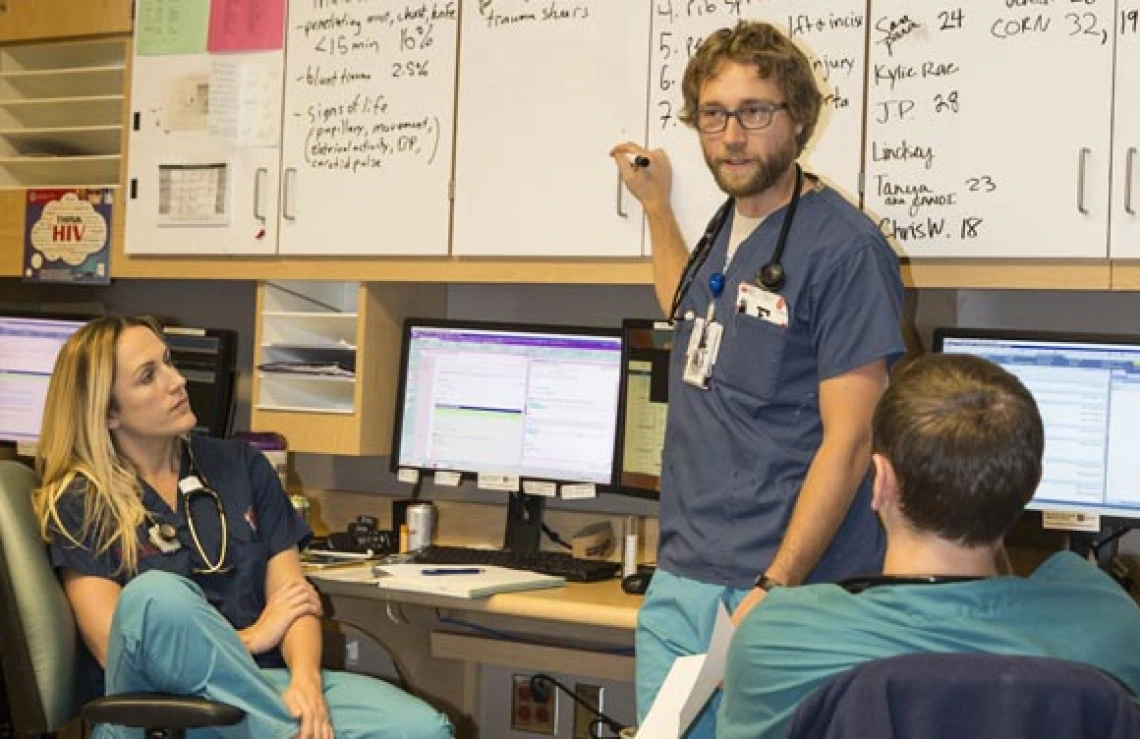
Learn more about the residency and fellowship programs at the College of Medicine – Tucson.
Upcoming Events
There are no upcoming events listed.
Contact


